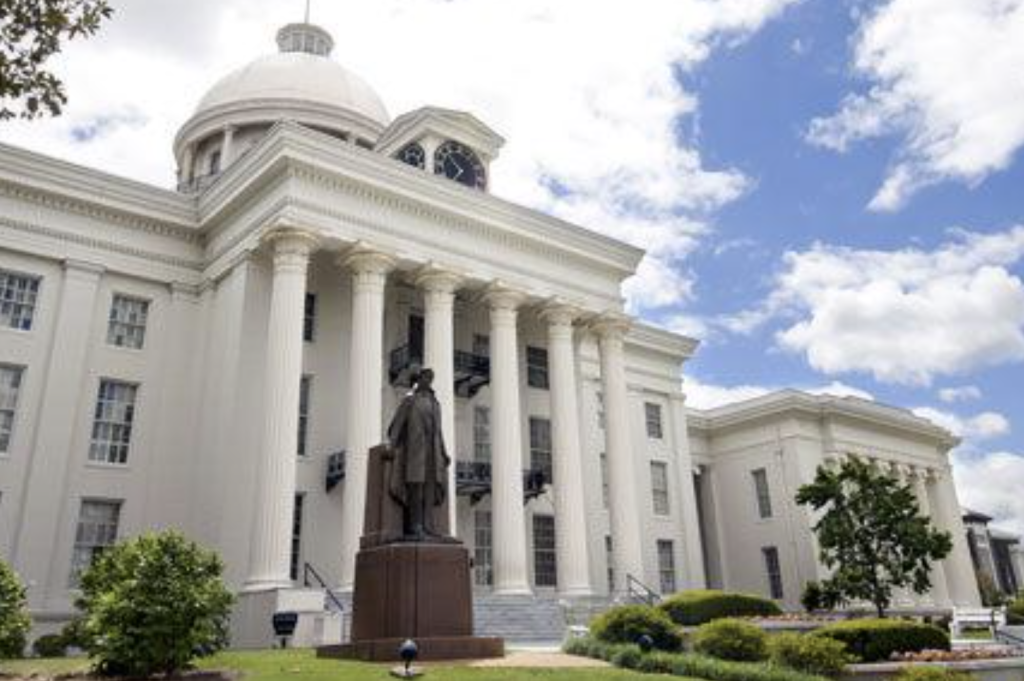Alabama lawmakers debate proposed congressional map as deadline approaches
Published 11:00 am Thursday, July 20, 2023

- Alabama Capitol
Editor’s note: This article was updated July 21, 2023 at 7 p.m. CT to include details of the Alabama Legislature’s July 21 vote on its new congressional map proposal.
MONTGOMERY — Alabama lawmakers, along party lines, approved a new proposed congressional map on the U.S. Supreme Court’s ordered July 21 deadline to create a more “racially” fair U.S. House districts.
Separate but similar maps were approved in the House and Senate July 19; But bother chambers agreed to present Senate Bill 5 to the local district court for approval as a middle ground.
“Following the U.S. Supreme Court order, I called the Alabama Legislature into a special session to readdress our congressional map,” said Gov. Kay Ivey after signing SB 5 in the late afternoon of July 21. “The Legislature knows our state, our people and our districts better than the federal courts or activist groups, and I am pleased that they answered the call, remained focused and produced new districts ahead of the court deadline.”
Many Democrats and groups have argued that the Republican-crafted map still doesn’t meet the Court’s order to add at least one majority-Black congressional district or one that is equally open to minority voters to meet the state’s increased minors population growth since a decade ago when the last map was drawn.
Currently, only one of the Alabama’s seven U.S. House of Representatives districts, District 7, is majority Black, despite Black people making up 27% of the state’s population.
The Court’s decision agreed with a previous ruling of a lower district court in Alabama indicating that despite the state’s population growth, the congressional map (House Bill 1) approved by the Republican-led legislature in 2021 was largely similar to the map a decade prior.
SB 5 keeps the one majority-Black districts and entails a second district that is approximately 40% Black.
Republican State Rep. Chris Pringle (D-101) said that current District 2 has a 30.12% Black voting age population. The House proposal (HB 5), similar top SB 5, increased it to a 42.45% Black voting age population. The seventh district currently has a 55.6% Black voting-age population. His map proposes a 51.5% Black voting-age population, he said.
“We feel this map complies with Section 2 because it provides minorities the ability to elect or defeat a candidate of their choosing, which is what Section 2 says,” Pringle said July 18, the second day of a special session to address the redistricting.
The Supreme Court’s 5-4 decision June 8 against the state’s congressional map in the case, Allen v. Milligan, affirmed Milligan’s argument that Alabama’s congressional maps violate the Voting Rights Act, which in part states that the right of U.S. citizens to vote shall not be denied or abridged… on “account of race, color or previous condition of servitude.”
The Supreme Court’s opinion also points to the lower district court’s note that, “on average, Black voters supported their candidates of choice with 92.3% of the vote” while “white voters supported Black-preferred candidates with 15.4% of the vote.”
“The racially polarized voting analysis has demonstrated that for Black voters in Alabama (to) have the opportunity to elect candidates of (their) choice, districts over 50% Black voting-age population, or something close to it, is required,” Democrat Rep. Chris England said July 19. “The map that you’re proposing puts it at 42%, (and) will likely be unable to achieve the desired objective of the district court.
“Additionally, the map that doesn’t create majority Black districts are not likely to be compliant with the court’s order because they are not likely to effectively create opportunities for Black voters to elect their candidates of choice,” England added.
Other Democrat and Black lawmakers took turns speaking on the House floor July 19 asking for a map that presents at least two districts that contain 50% or more of Black voting-age population.
Pringle stood firm in his belief that the bill meets the Court’s requirements. A map approved during the special session is expected to be presented before a federal court next month.
“I will tell you that I will proudly present this bill back to the court because I think this bill complies with the state’s VRA obligations,” Pringle said. “I’ve proven in the past I will follow the Voting Rights Act. Many of you were here last quadrennium. … I drew a map that took one of our Republican colleagues out of this chamber because it was the right thing to do. I drew a majority-minority district against one of my own members. That district elected a white person. I can’t control the Democrats lead, I can give them the opportunity.”
The state’s redistricting committee approved the map July 17. The proposed map largely affects districts in the southern parts of the state.
Groups in Georgia are also hopeful that the Supreme Court’s ruling against the Alabama will pave a way for new maps to be redrawn.
U.S. District Judge Steve Jones in Georgia has set a Sept. 5 hearing date to allow three lawsuits against Georgia House, Senate and congressional maps adopted by state lawmakers in 2021 to be heard in a coordinated trial.
The suits in general assert racial gerrymandering and violations Section 2 of the Voting Rights Act.
Shortly after the the Supreme Court’s ruling in the Alabama case, Jones ordered that parties in the Georgia case file a brief to address the Alabama decision about how it relates to the Georgia case.
In a July 17 order, Jones also denied Georgia Secretary of State Brad Raffensperger’s motion for a summary judgement, which would allow a decision to be made based on statements and evidence without going to trial.



